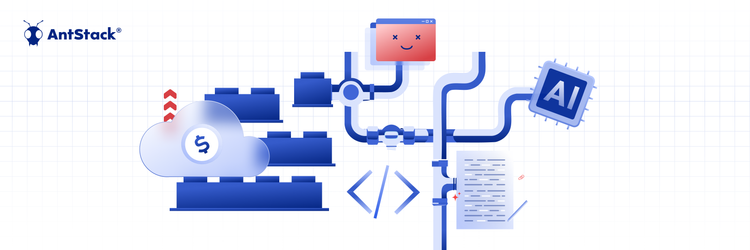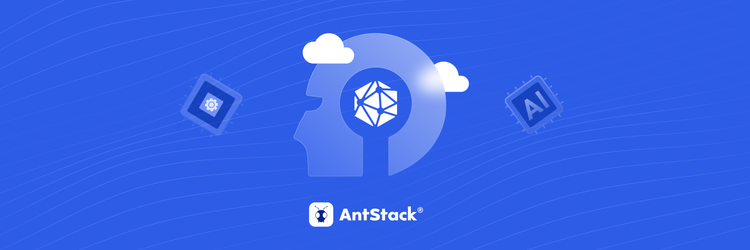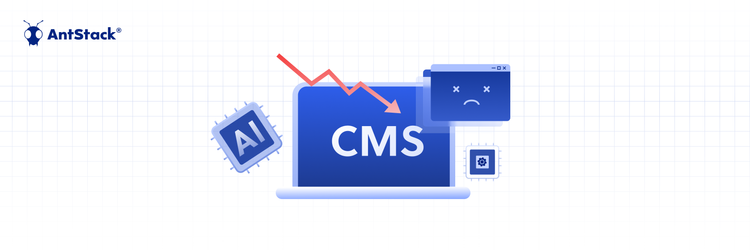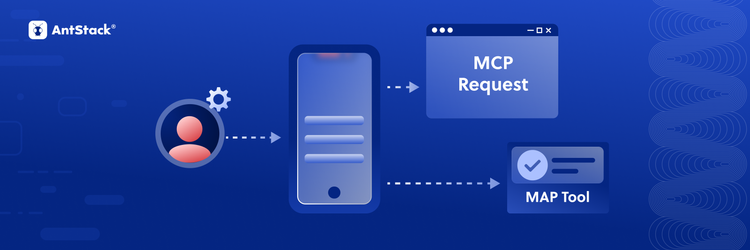Rethinking Cloud Spend: Modernization Over Short-Term Cuts
The world is undergoing a Digital Transformation meaning the process of transforming existing manual processes into platforms running on the cloud. Serverless helps in accelerating the process of digital transformation and artificial intelligence plays a crucial part in replacing manual processes with automated ones. According to Red Hat’s 2022 Global Tech Outlook report, 52% suggested the pandemic as a reason for accelerating digital transformation.
The process of digital transformation is hindered by the problem of managing data. Emerging tools and technologies like Artificial Intelligence, IoT, and Serverless Computing should be able to manage data and provide meaningful insights.
We have an idea about Artificial Intelligence, IoT, and Serverless Computing. Let us explore what happens when we leverage these technologies together.
What is Artificial Intelligence?
Artificial Intelligence is a technological advancement in information technology and data processing that is adopted by many industries that undergo digital transformation. It refers to processes and algorithms that stimulate human intelligence in machines for learning, perception, problem-solving, and decision making.
Let us look into the subsets of artificial intelligence:
- Machine Learning refers to techniques where machines learn and adapt to new data without human assistance. It is a set of algorithms that can learn, make predictions, extract hidden details and classify data.
- Deeping Learning refers to learning through the absorption of a large amount of unstructured data. It is a neutral network with three or more layers.
What is Internet of Things or IoT?
Internet of Things or IoT means a network of interrelated devices connected to the internet and technology that supports communication between devices. IoT facilitates collecting and exchanging data across devices connected to the internet.
The components of IoT are:
- Smart Device collects data, user input, and communicates data to and from the application over the internet.
- IoT Application is a set of software that interprets data received from various devices. It interprets and analysis data using artificial intelligence and machine learning.
- A graphical User Interface can be an application or website to control the devices.
Pause. Too Technical Right? Let us understand the relationship between these technologies.
Understanding the Relationship between IoT and AI
IoT plays an important role in capturing a tremendous amount of data from multiple sources. The intersection of IoT and AI changes the way businesses and organization functions.
AI-supported IoT system will result in machines that stimulate human behaviour and supports problem-solving with minimal or no human assistance. IoT is concerned with the way devices interact using the internet and AI will ensure devices learn from collected data.
IoT provides data, artificial intelligence helps to analyze and interpret data. This results in creativity and making smart decisions for a better outcome. IoT and artificial intelligence help in flowing ways:
- AI in IoT constantly monitors the data and detects abnormality immediately thus enhancing productivity and efficiency in the process.
- Combining AI and IoT helps in analyzing uncertainty in advance and automating the responses for the situation.
- AI and IoT can help in creating new products and enhancing existing products by analyzing and processing the data constantly.
Serverless Computing - The Game Changer
Serverless is a form of cloud computing in which the service provider manages the resources for the user. It removes the burden of the creation and management of infrastructure. These resources are replaced as functions that are run and managed by the service provider.
The main advantage of the serverless application is that it does not have heavy resources like database, file storage, etc. It relies on services offered by the service provider which manages the workload automatically.
Serverless computing is:
- Servers are replaced by functions provided by the service provider.
- The architecture of serverless computing is distributed and event-driven.
- Users focus only on developing the application and not on the infrastructure and resources.
Experimenting with Serverless and IoT
There is a transition in offering IoT platforms in the serverless models due to low cost and less maintenance of IoT systems. IoT and serverless have introduced new ways of managing connected devices in the network.
Both technologies are in the developing stage and are needed for digital transformation. IoT implementation in serverless will encourage cross-platform portability and help in capturing a wider market.
The serverless computing model has been one of the reasons for an increase in IoT platforms due to its low cost and less maintenance. It promotes IoT implementation for the following benefits:
- No Investments in infrastructure and resources.
- Do not require in-house system administration.
- Easy to develop and deploy the system.
Can Serverless Architecture be used for AI Models?
Developers are faced with the problem of managing machine learning models that affect their productivity and efficiency. With the help of serverless architecture, the complexity faced by the developers can be reduced.
The serverless architecture supports AI models by managing the resources. The main advantage of serverless architecture is that the infrastructure and resources are managed by the service provider. The developers can concentrate on developing and training the AI model.
AI models are built for complex problems and perform tasks like pre-processing, collection of data, model building, and training. Such tasks should be backed by steady storage, resources, and infrastructure that can be provided by serverless computing. By integrating AI and serverless, the developers have the following benefits:
- Serverless supports execution-based pricing. This makes AI models cost-effective for the developer.
- It allows developers to work independently with minimal interference thus focusing on building and training the AI model.
- Serverless can read just the system according to the requirements and reduces the problem of storage.
Conclusion
Artificial Intelligence, IoT, and Serverless are emerging technology and are much needed for digital transformation. These technologies can be leveraged together for developing new products and enhancing existing products.
Serverless architecture help in developing complex AI model easily. IoT in serverless has introduced new ways of managing connected devices in the network. AI-supported IoT systems will support businesses by enhancing productivity and efficiency.










